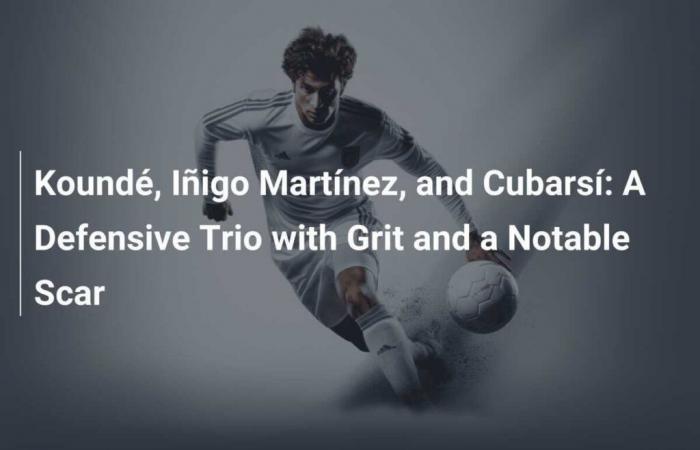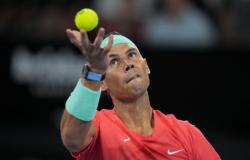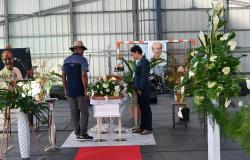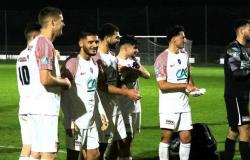Flick’s FC Barcelona has just corrected Red Star Belgrade with a new offensive demonstration, and a defender has established himself as the spokesperson for the Blaugrana, holding the man of the match trophy in his hand. Iñigo Martínez treated this object like yesterday’s newspaper, something useless and of little value. In his mind, it was a simple trinket for others. “I’m not used to these things, but the work belongs to the whole group; we won thanks to everyone’s effort. That takes second place,” he evaded dismissively.
The 33-year-old Basque central defender is one of those mid-range signings who are often underestimated amid the academy’s momentum, but he is exploding in his second season. Alongside Jules Koundé and Pau Cubarsí, they form the defensive line, elevating the team and exposing opposing attackers, similar to powerful beasts in rugby scrums. They also filter passes, switch the play with a precise goal, and in the case of the Frenchman, he even participates brilliantly in the attack on the right flank.
Read more:
Flick’s gesture towards players left out in Belgrade
The Blaugrana offensive machine (55 goals in 16 matches, an unprecedented record, surpassing the 54 scored by Ferdinand Daucik’s Barça in the 1950-51 season, which is practically prehistoric) would not have been possible without the spatial contractions provided by the three defensive pillars, who started 12 of the 16 games. Alejandro Balde and Gerard Martín alternate on the left flank. Together, Koundé, Cubarsí and Martínez form the essential shield that explains much of Flick’s successful method in this season’s opener.
Ronald Araujo is said to be quickly returning to form at Sant Joan Despí. Despite his defensive exuberance, it’s hard to imagine him dethroning anyone unless there’s an injury. Even less Andreas Christensen. The three pillars are coordinated as if connected by an invisible thread, credited with the 6.75 offsides that Barça provokes per match. In fact, one of the two goals against Red Star was preceded by an error from the fourth element, the least conventional. Gerard Martín has sometimes struggled to take that crucial step forward to disrupt opposition attacks. Let’s individualize a little.
Read more:
Flick Encourages Joan Laporta to Put His Hand in His Pocket for Barça’s Best Striker
The Basque, called up by Xavi, had a first season marked by injuries and struggled to find his place in the starting lineup. He arrived proclaiming himself leader, but it was hard to notice. That was until Flick awarded him the stripes of a general. This year, he is rightly seen as a strong voice within a college locker room, a return to the old school that shows the way for a good professional: the captain without an armband. You only had to listen to his post-match comments after the convincing victory in Belgrade. Everyone was proud, but they were disappointed by the two goals conceded. “Their second goal came from a degree of team relaxation. We have to be careful about that. We can’t give anything away,” he said with that expressive eloquence typical of his Basque roots. He scored the team’s first goal, the second for himself this season. “A well-executed play that worked perfectly.” On the pitch, he gave instructions to Gerard Martín for his small misalignments.
Read more:
Injured Real Madrid receives Osasuna to overcome crisis
The official MVP of the match was Iñigo, but Koundé undoubtedly deserved it more. Three assists – or three tasty treats – in a display of synergy with Lamine Yamal that was both gripping and effective. With both on the field, the play shifts to the right side. They combine, overlap, ensuring verticality. Sooner or later, the Frenchman will have coordinated with Cubarsí and Martínez to advance the line, or he will have sprinted back in a defensive action.
The Frenchman runs a lot and runs well. It didn’t seem hyperbolic when he was asked if he was in the best shape of his career after the match. “Maybe. I feel really good physically. It’s something I’m putting a lot of effort into,” said the 25-year-old, already forgetting those old hesitations about playing as a fullback. He arrived as a top centre-back and is now transforming into one of the best full-backs in Europe. And he even benefits from it, as he admitted. “I’m having fun and I’m very happy, and I hope to continue on this path. This is where I have the most room to improve,” he said of his star-studded offensive night, assistant Lewandowski, Raphinha and Fermín.
Read more:
FC Barcelona suspect Frenkie De Jong of wanting to leave as a free agent in 2026
He left Belgrade with a new look. Ten rather striking stitches run through his strong jaw after being hit by the toe of a shoe. FC Barcelona’s social networks displayed his bloodied and bruised face, a reminder of football from another era. “Cubarsí warrior,” Gavi wrote on social media about the 17-year-old defender. Such an exquisite central defender, suddenly ‘Puyolized’.
Read more:
City’s Yamal, Garnacho and Savinho among most valuable young talents, Brighton lead ahead of Chelsea
This stitched jaw connects him to the former captain’s indomitable spirit. And it’s not because he needs battle scars to prove his commitment to the team. Cubarsí is appreciated for his precise deliveries, his integration into the geometer-style game, and his sharp tackles. All this at only 17 years old, almost obscene. If he needed a scar to make him look less childish and impose more presence, he now has one – a lasting memory of ‘little Maracanã’.






